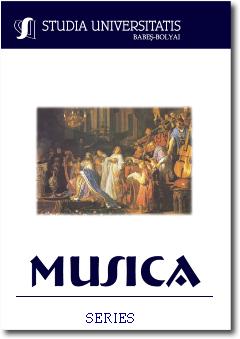APPROACHES TO THE MUSICAL TIME IN LIGETI’S WORK THROUGH HIS PIANO ÉTUDES
APPROACHES TO THE MUSICAL TIME IN LIGETI’S WORK THROUGH HIS PIANO ÉTUDES
Author(s): Attila FodorSubject(s): Music
Published by: Studia Universitatis Babes-Bolyai
Keywords: Ligeti; piano études; rhythm; polyrhythm; polymetre.
Summary/Abstract: After developing his famous micro polyphony in the 60’, conceived as an alternative to the declined tonal music and even the serialism, Ligeti was going to explore in the last decades of the 20th century the field of rhythm, as a consequence of his compositional evolution. Meanwhile, he came into contact with a series of new musical and scientific phenomena, which captivated his creative mind, urging him to undertake further experiments regarding the possibilities of a multidimensional and non-symmetrical articulation of musical time. The most fertile field of these explorations was probably the piano genre, abandoned by Ligeti from the early 60’ for orchestral music. Alongside the Three Pieces for Two Pianos (1976) and the Piano Concerto (1985-88), his most significant series of piano pieces are the eighteen études composed between the years 1985-2011, published in three volumes. They represent in many respects a rhythm microcosm, challenging for interpreters, edifying for those interested in composition techniques, and fascinating for the audience.
Journal: Studia Universitatis Babes-Bolyai - Musica
- Issue Year: 60/2015
- Issue No: 1
- Page Range: 93-102
- Page Count: 10

